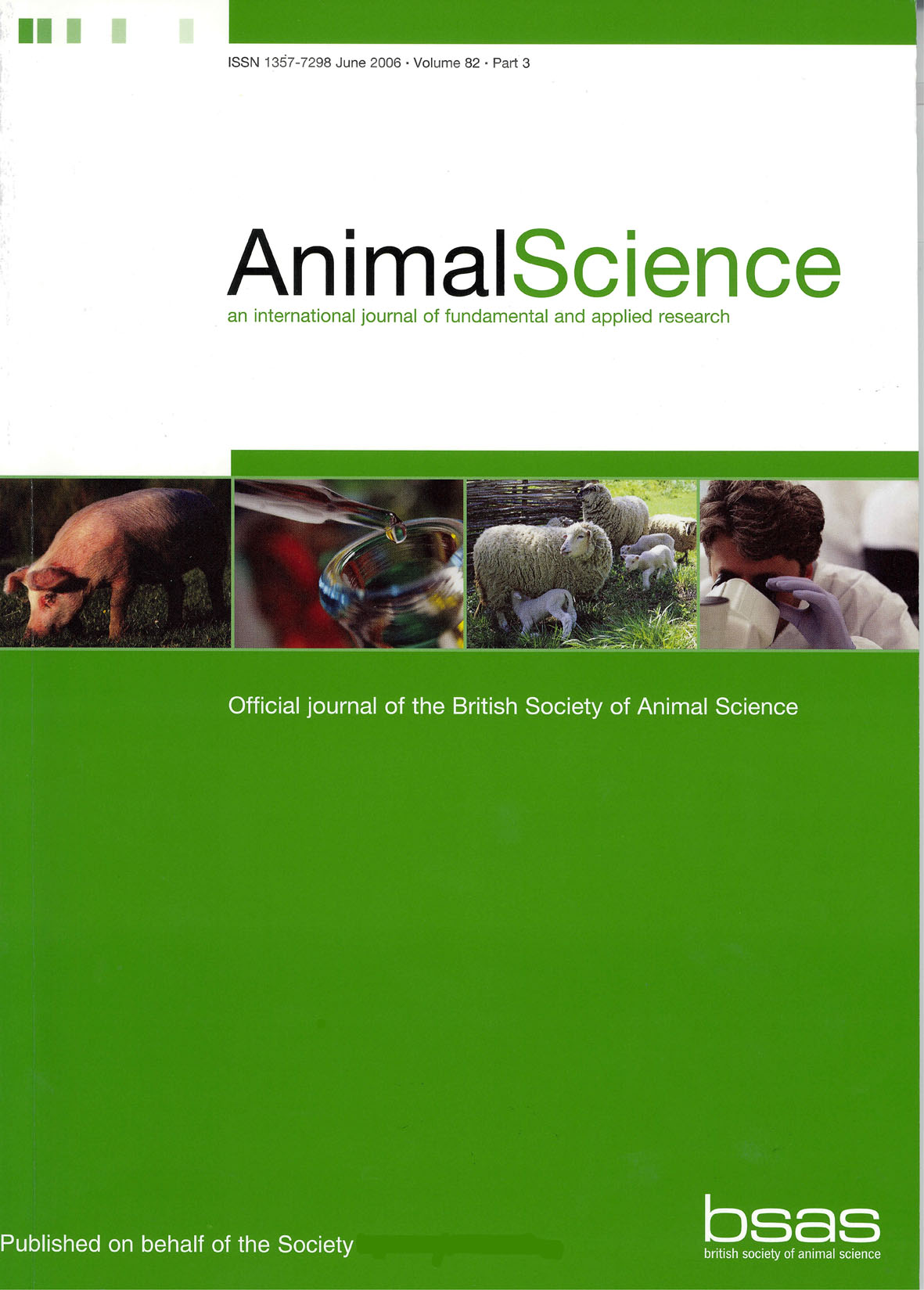No CrossRef data available.
Article contents
The influence of a bio-active feed supplement (hormonexa) on the performance of beef cattle
Published online by Cambridge University Press: 02 September 2010
Summary
1. Hormonexa, a bio-active feed supplement, was included at the rate of 3·1 kg per 1000 kg of the concentrate ration for finishing Hereford · Ayrshire steers.
2. Live-weight gain and food conversion were unaffected by the addition of Hormonexa.
3. The killing-out percentage of the supplemented animals was significantly lower and their carcass quality was slightly, but not significantly, lower than that of the control animals.
- Type
- Research Article
- Information
- Copyright
- Copyright © British Society of Animal Science 1972
References
REFERENCES
Evans, R. E. 1960. Rations for livestock. Bull. Minist. Agric. Fish. Fd, Lond. No. 48. Her Majesty's Stationery Office, London.Google Scholar
Laird, R. and Walker-Love, J. 1971. The influence of a bio-active feed supplement (Hormonexa) on the performance and carcass quality of bacon pigs. Anim. Prod. 13: 529–536.Google Scholar
Scientific Animal Foods Ltd. 1966. Fourteen years of bio-active feeding. The past and the future. Bio-active Feed Review: 6, (No. 1).Google Scholar
Snedecor, G. W. 1956. Statistical Methods. 5th ed. Iowa State College Press, Ames, la.Google Scholar
Wickens, R. and Ball, C. 1967. Comparisons of yard-fed bulls and steers for beef production. Expl. Husb. 15: 64–87.Google Scholar
Wood, W. A. and Worden, A. N. 1963. Effect on performance of a supplement comprised largely of glandular tissue (Hormonexa) in the diet of rats, rabbits and chicks. J. Sci. Fd Agric. 14: 904–910.Google Scholar


